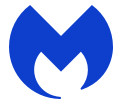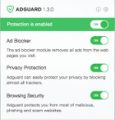What is SampleCheck
According to security professionals, SampleCheck is an adware application that targets Mac computers. Adware is a form of malicious software that’s designed to display a large amount of advertisements in form of pop-up windows, discount offers, banners or even fake alerts, usually within a web browser. Adware can seriously affect your privacy, your computer’s performance and security.
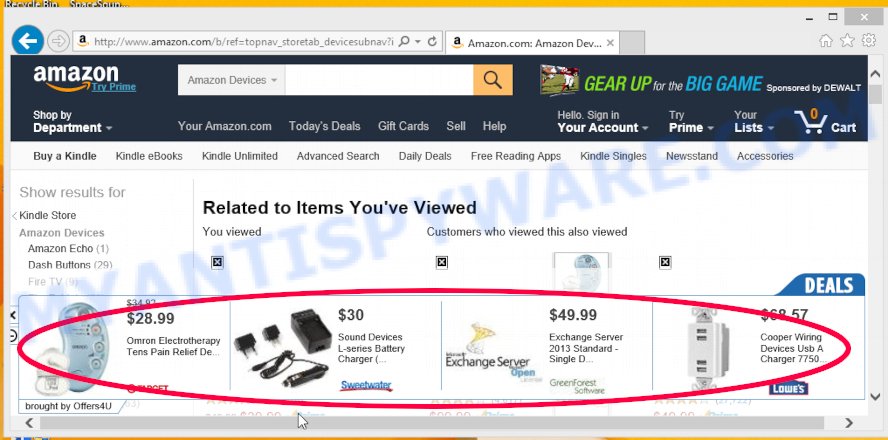
Unwanted ads
Another reason why you need to get rid of SampleCheck app is its online data-tracking activity. It can collect your World Wide Web browsing activity by saving URLs visited, IP addresses, web browser version and type, cookie information, Internet Service Provider (ISP) and web-sites visited. Such kind of behavior can lead to serious security problems or personal information theft. This is another reason why SampleCheck should be removed as soon as possible.
How does SampleCheck get on your machine
Adware software actively distributed with free apps, as a part of the setup file of these applications. Therefore, it’s very important, when installing a new software, read the Terms of use and the Software license, as well as to select the Manual, Advanced or Custom install mode. In this mode, you can disable the installation of optional browser plugins and programs and protect your MAC OS from adware software.
Threat Summary
| Name | SampleCheck, SampleCheck 1.0 app |
| Type | adware software, PUP (potentially unwanted program), Mac malware, Mac virus |
| Detection Names | OSX.Trojan.Gen, Adware/Adload!OSX, ApplicUnwnt, Program:MacOS/Vigram.A, Trojan-Downloader.OSX.Adload, Adware.MAC.Generic, MacOS.Agent-MT and Osx.Adware.Cimpli |
| Distribution | Freeware installers, fake software updaters, malicious pop up ads and torrent downloads |
| Symptoms | Every time you perform an Internet search, your browser is redirected to another web-page, unclosable window appear and recommend fake Jave updates, your computer starts automatically installing unexpected programs, unwanted browser extensions or toolbars keep coming back, your browser homepage has changed and you cannot change it back, your internet browser slows to a crawl. |
| Removal | SampleCheck removal guide |
How to Remove SampleCheck (removal steps)
Without a doubt, SampleCheck is harmful to your MAC system. So you need to quickly and completely remove this adware. To get rid of adware software, you can use the manual removal steps which are given below or free malicious software removal tool such as MalwareBytes Anti-Malware (it is free). We recommend you use automatic removal way that will help you to remove SampleCheck adware easily and safely. Manual removal is best used only if you are well versed in computers or in the case where adware is not deleted automatically. Some of the steps below will require you to close this webpage. So, please read the steps carefully, after that bookmark it or open it on your smartphone for later reference.
To remove SampleCheck, execute the steps below:
- Remove unwanted profiles on Mac device
- Uninstall SampleCheck associated software by using the Finder
- Remove SampleCheck related files and folders
- Scan your Mac with MalwareBytes
- Remove SampleCheck from Safari, Chrome, Firefox
- How to stay safe online
Remove unwanted profiles on Mac device
SampleCheck can install a configuration profile on the Mac system to block changes made to the browser settings. Therefore, you need to open system preferences, find and delete the profile installed by the adware software.
Click Apple menu ( ![]() ) > System Preferences.
) > System Preferences.
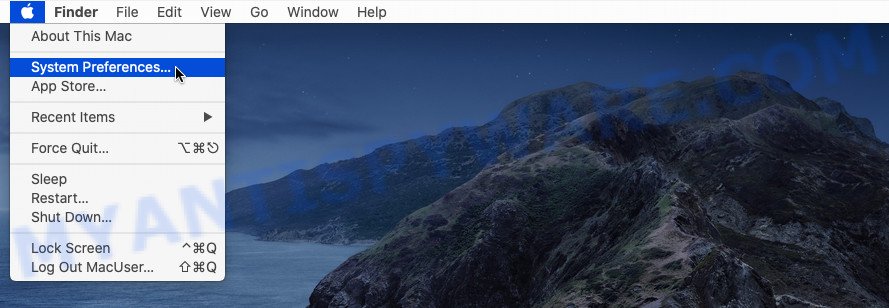
In System Preferences, select Profiles. if there is no Profiles in the list of preferences, that means there are no profiles installed on the Mac computer. If there is Profiles in the list, then click on it, then select a profile associated with SampleCheck.
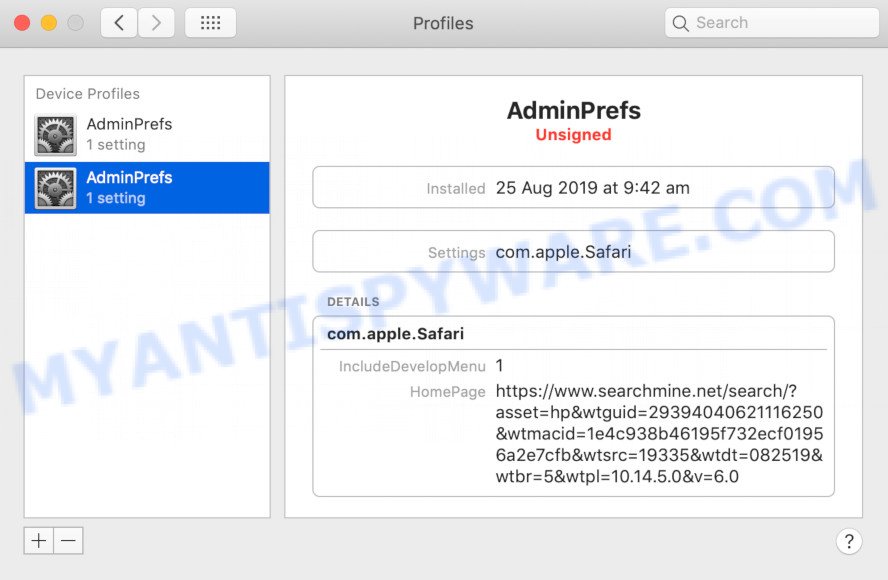
To delete a malicious profile, click on the minus button ( – ) located at the bottom-left of the Profiles screen.
Uninstall SampleCheck associated software by using the Finder
The next step to remove browser hijackers, adware and PUPs is to delete unknown and dubious programs. Using the Finder you can do this quickly and easily. We recommend you not to skip this step, as it often helps to get rid of internet browser redirects and annoying ads.
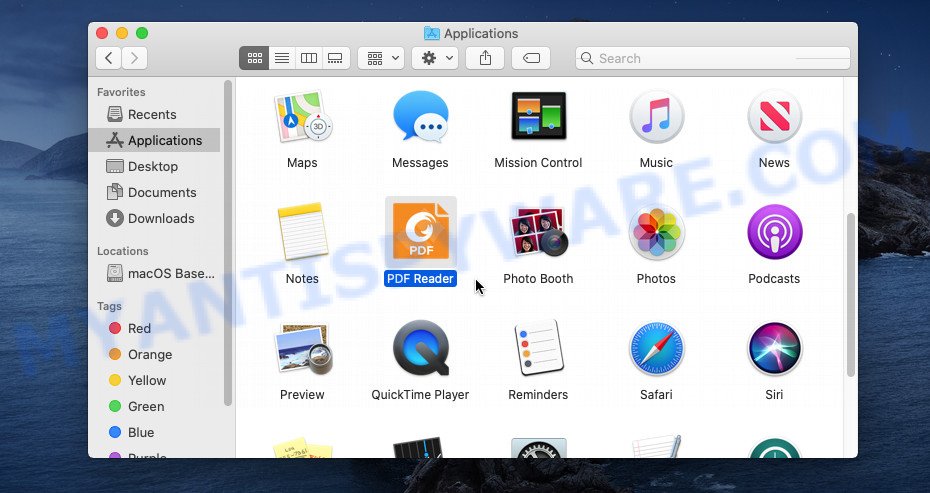
- Open the Finder.
- Click “Applications”.
- It will display a list of all software installed on the MAC.
- Scroll through the all list, and delete dubious and unknown applications. Pay maximum attention to the program you installed last.
- Drag the suspicious program from the Applications folder to the Trash.
- Empty Trash.
Remove SampleCheck related files and folders
Now you need to try to find SampleCheck related files and folders, and then delete them manually. You need to look for these files in certain directories. To quickly open them, we recommend using the “Go to Folder…” command.
SampleCheck creates several files, these files must be found and removed. Below is a list of files associated with this unwanted program.
- /Library/LaunchDaemons/com.SampleCheck.system.plist
- ~/Library/LaunchAgents/com.SampleCheck.service.plist
- /Library/Application Support/.(RANDOM)/System/com.SampleCheck.system
- ~/Library/Application Support/.(RANDOM)/Services/com.SampleCheck.service.app
Some files created by SampleCheck are hidden from the user. To find and delete them, you need to enable “show hidden files”. To do this, use the shortcut CMD + SHIFT + . Press once to show hidden files and again to hide them. There is another way. Click Finder -> Applications -> Utilities -> Terminal. In Terminal, paste the following text: defaults write com.apple.finder AppleShowAllFiles YES

Press Enter. Hold the ‘Option/alt’ key, then right click on the Finder icon in the dock and click Relaunch.
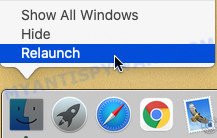
Click on the Finder icon. From the menu bar, select Go and click “Go to Folder…”. As a result, a small window opens that allows you to quickly open a specific directory.

Check for SampleCheck generated files in the /Library/LaunchAgents folder

In the “Go to Folder…” window, type the following text and press Go:
/Library/LaunchAgents
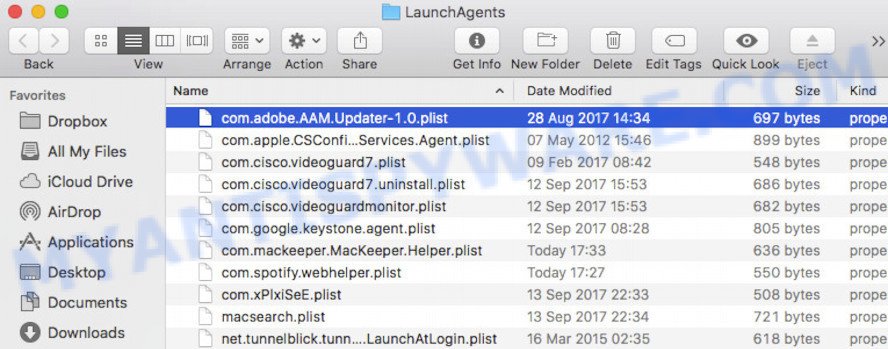
This will open the contents of the “/Library/LaunchAgents” folder. Look carefully at it and pay special attention to recently created files, as well as files that have a suspicious name. Move all suspicious files to the Trash. A few examples of files: com.net-preferences.plist, macsearch.plist, com.SampleCheck.service.plist, com.google.defaultsearch.plist, , search.plist, com.machelper.plist and installapp.plist. Most often, potentially unwanted programs, adware and browser hijackers create several files with similar names.
Check for SampleCheck generated files in the /Library/Application Support folder

In the “Go to Folder…” window, type the following text and press Go:
/Library/Application Support
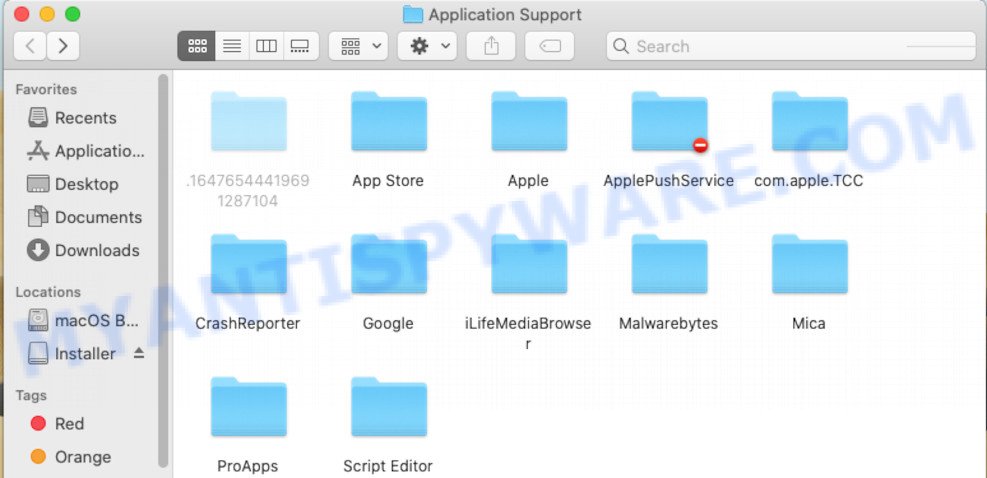
This will open the contents of the “Application Support” folder. Look carefully at its contents, pay special attention to recently added/changed folders and files. Check the contents of suspicious folders, if there is a file with a name similar to com.SampleCheck.system, then this folder must be deleted. Move all suspicious folders and files to the Trash.
Check for SampleCheck generated files in the “~/Library/LaunchAgents” folder

In the “Go to Folder…” window, type the following text and press Go:
~/Library/LaunchAgents

Proceed in the same way as with the “/Library/LaunchAgents” and “/Library/Application Support” folders. Look for suspicious and recently added files. Move all suspicious files to the Trash.
Check for SampleCheck generated files in the /Library/LaunchDaemons folder
In the “Go to Folder…” window, type the following text and press Go:
/Library/LaunchDaemons

Carefully browse the entire list of files and pay special attention to recently created files, as well as files that have a suspicious name. Move all suspicious files to the Trash. A few examples of files to be deleted: com.SampleCheck.system.plist, com.installapp.system.plist, com.search.system.plist, com.machelper.system.plist and com.macsearch.system.plist. In most cases, PUPs, browser hijackers and adware create several files with similar names.
Scan your Mac with MalwareBytes
If you carefully followed the previous steps, then you should be able to remove SampleCheck. Of course, very often potentially unwanted programs, adware software and browser hijackers hides on a Mac computer, disguising itself as legitimate apps and files. Therefore, in some cases, it is difficult for an inexperienced user to decide whether a particular file is part of browser hijackers, adware software and PUPs. Therefore, we recommend you to run MalwareBytes Free to scan the Mac.
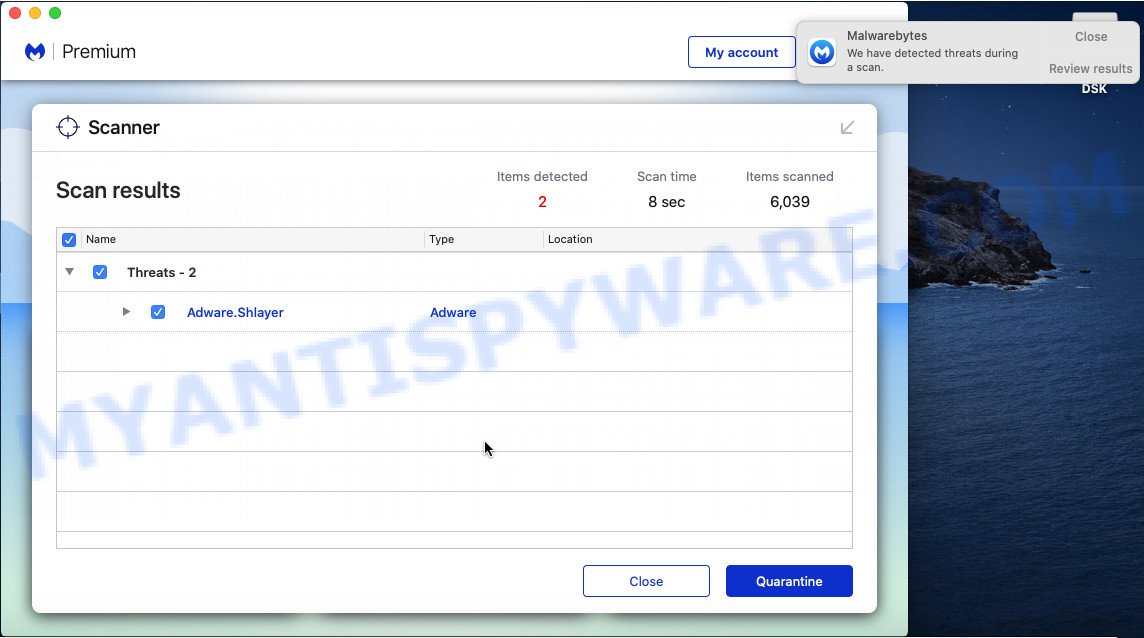
Download MalwareBytes Free from the following link.
21024 downloads
Author: Malwarebytes
Category: Security tools
Update: September 10, 2020
When downloading is done, run it and follow the prompts. Click the “Scan” button for scanning your MAC OS for the SampleCheck . Depending on your machine, the scan can take anywhere from a few minutes to close to an hour. While the MalwareBytes Anti-Malware is checking, you can see how many objects it has identified either as being malicious software. All found items will be marked. You can delete them all by simply press the “Quarantine” button.
The MalwareBytes Anti-Malware (MBAM) is a free program that you can use to remove all detected folders, files, malicious services and so on.
Remove SampleCheck from Safari, Chrome, Firefox
This step will show you how to delete harmful plugins. This can remove SampleCheck adware and fix some surfing issues, especially after adware infection.
You can also try to delete SampleCheck adware software by reset Google Chrome settings. |
If you are still experiencing issues with SampleCheck adware software removal, you need to reset Mozilla Firefox browser. |
|
How to stay safe online
One of the worst things is the fact that you cannot block all harmful web pages using only built-in Windows capabilities. However, there is a program out that you can use to block annoying browser redirects, advertisements and popups in any modern web browsers including Chrome, Safari and Firefox. It is named Adguard and it works very well.
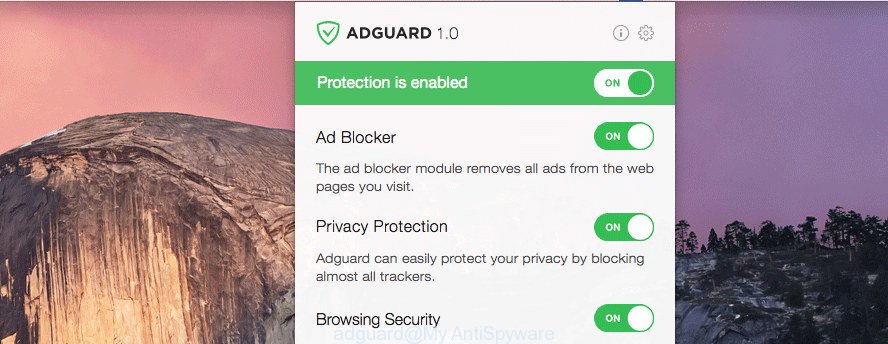
- Visit the following page to download AdGuard.
AdGuard for Mac download
3782 downloads
Author: © Adguard
Category: Security tools
Update: January 17, 2018
- When the download is complete, start the downloaded file. You will see the “Setup Wizard” program window. Follow the prompts.
- When the installation is done, press “Skip” to close the installation program and use the default settings, or press “Get Started” to see an quick tutorial which will allow you get to know AdGuard better.
- In most cases, the default settings are enough and you do not need to change anything. Each time, when you launch your machine, AdGuard will start automatically and stop unwanted advertisements, block malicious and misleading web pages.
To sum up
Now your MAC system should be clean of the SampleCheck adware. We suggest that you keep AdGuard (to help you block unwanted advertisements and unwanted harmful webpages) and MalwareBytes Anti Malware (MBAM) (to periodically scan your MAC OS for new malicious software, browser hijackers and adware). Make sure that you have all the Critical Updates recommended for Mac operating system. Without regular updates you WILL NOT be protected when new browser hijackers, malicious applications and adware are released.
If you are still having problems while trying to get rid of SampleCheck ads from your web browser, then ask for help here.
